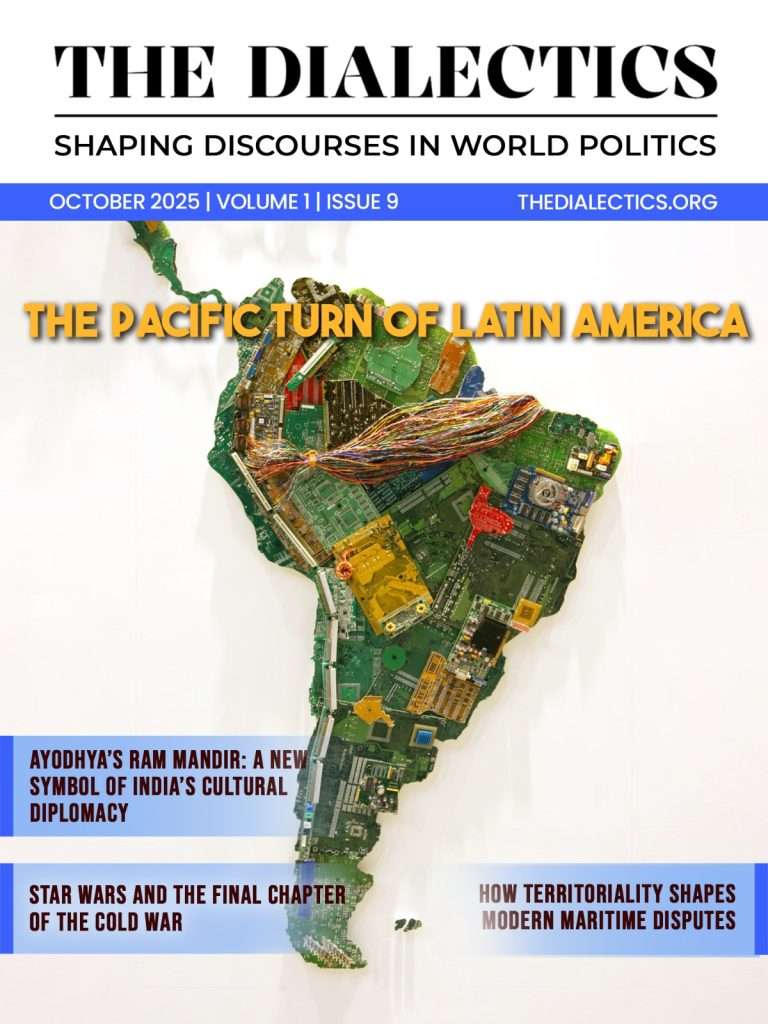The Indian Ocean is of great strategic significance in contemporary global geopolitics, serving as a key route for commerce, energy flows, and naval dominance. As the third-largest ocean in the world, it connects the Middle East, Africa, South Asia, Southeast Asia, and Australia, and serves as a natural maritime highway for international trade. The Indian Ocean Region (IOR) facilitates the transportation of around 80% of global maritime oil trade and is linked to important maritime points of contention including Bab el-Mandeb, the Strait of Malacca, and the Strait of Hormuz, making it indispensable for global energy security and economic stability.
India, situated at the heart of the northern Indian Ocean, considers the region crucial to its strategic projections. The country’s coastline stretches over 7,500 kilometers, with critical commercial and naval ports. Due to its geographical advantage, India intends to act as a net security provider in the region. The Security and Growth for All in the Region (SAGAR) doctrine is the formal manifestation of this vision, promoting maritime cooperation, capacity building, and economic integration among the littoral states. The Indian Ocean also plays a vital role in India’s blue economy policy, encompassing sectors such as fisheries, seabed mining, renewable energy, and marine tourism.
Geopolitical Competition and External Influence
However, the Indian Ocean is not only an economic and environmental zone; it has emerged as a contested strategic region. As the Indo-Pacific concept gains traction, major global powers are expanding their presence and influence in the Indian Ocean Region. China’s increasing naval presence and its strategic investments in ports in littoral states under the Belt and Road Initiative (BRI)—including Gwadar in Pakistan, Hambantota in Sri Lanka, and Kyaukpyu in Myanmar—have raised concerns about the potential for geopolitical friction. These developments have prompted India and other regional actors, such as the United States, Japan, and Australia, to deepen strategic partnerships, exemplified by initiatives like the Quadrilateral Security Dialogue (Quad) and the Indian Ocean Naval Symposium (IONS).
Bangladesh’s Evolving Maritime Posture
The statement made by Muhammad Yunus, the Chief Advisor of Bangladesh’s interim government, during a roundtable in Beijing, brought the geopolitical volatility of the region into prominence. Yunus urged the Chinese government to establish an economic foothold in Bangladesh, describing it as the “only gateway to the ocean” for India’s northeastern states. While this comment was diplomatically inappropriate and misleading—considering India’s own access to the Bay of Bengal—it reflects the strategic leverage that countries like Bangladesh perceive themselves to hold in the Indian Ocean. Bangladesh’s increasing engagements with China and Pakistan, particularly in defense and infrastructure, indicate a shifting maritime posture that warrants careful scrutiny by India.
India has taken a comprehensive approach to addressing these emerging challenges. Beyond conventional military capabilities, India has placed strong emphasis on infrastructure development, joint exercises, and maritime domain awareness. The Information Fusion Centre–Indian Ocean Region (IFC-IOR), based in Gurugram, enhances real-time data sharing and surveillance capabilities, helping India and partner nations secure shared maritime areas. Furthermore, India’s outreach to island nations such as the Maldives, Seychelles, and Mauritius has been marked by the signing of defense agreements, capacity building programs, and infrastructural support to ensure regional stability and reduce external influence.
India’s port-led development strategy under the Sagarmala initiative and its investments in transnational connectivity projects — such as the India-Myanmar-Thailand Trilateral Highway and the Kaladan Multi-Modal Transit Transport Project — demonstrate its commitment to linking the northeastern region with the Bay of Bengal, thus neutralizing claims of regional isolation. The emphasis on comprehensive connectivity further demonstrates India’s view of the Indian Ocean as a driving force behind regional integration and development rather than merely a maritime route.
Security and Environmental Challenges in the IOR
Ecologically speaking, the Indian Ocean hosts fragile marine ecosystems that are increasingly endangered by climate change, overfishing, and marine pollution. An essential component of the blue economy concept is addressing these issues through sustainable methods. India has taken initial steps to promote regional cooperation on environmental issues, aligning with global frameworks such as the Indian Ocean Rim Association (IORA) and UN Sustainable Development Goals (SDGs).
A calibrated blend of diplomacy, enhanced defense capabilities, economic investment, and sustainable maritime governance is required for India to safeguard its long-term interests in the Indian Ocean. Diplomatically, India must continue to foster multilateral cooperation within regional forums, while maintaining strategic bilateral relations with key maritime actors. In terms of defense, modernization of naval assets, increased maritime exercises with allies, and intelligence-sharing are essential for effective deterrence. Financially, targeted investments in port infrastructure and logistics chains will improve regional economic resilience. Simultaneously, strengthening marine governance through adherence to international maritime law, preservation of biodiversity, and climate adaptation efforts will bolster India’s credibility as a responsible maritime power.
The Indian Ocean remains vulnerable to a range of traditional and non-traditional security threats. Piracy, illegal fishing, trafficking, and territorial disputes continue to challenge the stability of maritime corridors. Furthermore, militarization and strategic competition among major powers risk transforming the IOR into a contested space. For example, according to a 2024 report by the Indian Maritime Foundation, there has been a 15% increase in foreign military deployments and dual-use infrastructure projects within the IOR, heightening regional anxieties. Additionally, the United Nations Office on Drugs and Crime (UNODC) has noted a resurgence of drug trafficking routes through the western Indian Ocean, posing severe security risks to coastal nations.
In this context, Bangladesh’s evolving role in the IOR deserves close attention. While it has historically maintained a balanced foreign policy, recent developments suggest a reevaluation of its maritime strategy. New factors are added to the region’s strategic equation by the interim government’s growing involvement with China and Pakistan, which ranges from port access to the military hardware procurement. The controversial comments by Yunus, whether officially endorsed or not, indicate a growing willingness within certain segments of the Bangladeshi leadership to leverage maritime geography for political and strategic advantage. Given Bangladesh’s control over critical access routes in the Bay of Bengal; its policy trajectory has the potential to severely impact India’s northeastern connectivity, regional security, and maritime influence. India must thereby improve marine cooperation with Bangladesh by means of communication, capacity building, and encompassing economic partnerships.
Conclusion
In conclusion, the Indian Ocean has become as a pivotal region in world politics, influencing strategic choices, economic frameworks, and regional cooperation among both global as well as regional powers. The Indian Ocean is central to the evolving Indo-Pacific region, shaping how goods and resources move and influencing who holds power both within Asia and globally. As the strategic stakes rise and new actors assert their influence, for India, safeguarding its interests in the IOR requires a comprehensive and balanced approach. A calibrated blend of diplomacy, enhanced defense capabilities, economic investment, and sustainable maritime governance is required. As geopolitical rivalries intensify, the Indian Ocean will remain at the epicenter of contestation and cooperation — thereby critically testing India’s maritime vision and strategic foresight.




